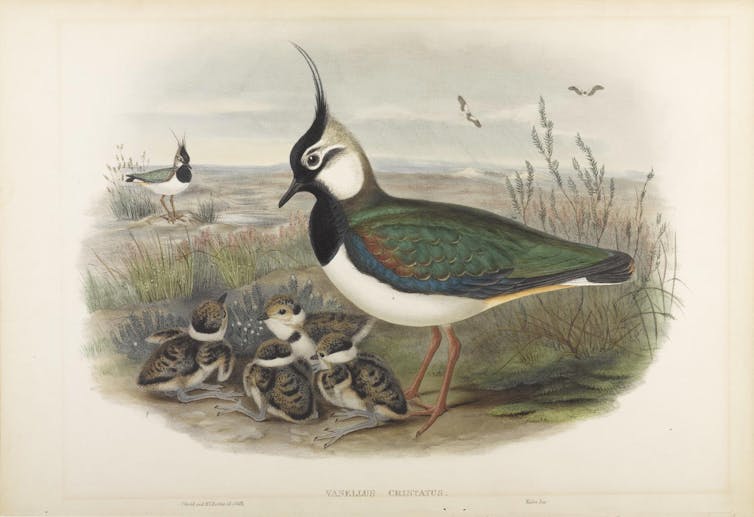
Earlier this year I found myself stood among a sea of swaying ox-eye daises in a floodplain meadow on the Attingham estate in Shropshire, on land owned by the National Trust. I noticed other plants growing here: the sunny yellows of meadow buttercup, the wine-reds of great burnet and the furry seed heads of meadow foxtail. The sounds of birds and insects bubbled in the background.
It felt like a thriving environment, but I knew that this meadow could be so much more. Floodplain meadows are hugely important spaces, supporting rare plant communities and providing food for animals to eat during the winter months.
The soils of floodplain meadows are recognised by scientists as an important carbon store, helping to slow floodwaters and absorb nutrients. Many remaining floodplain meadows have been managed in the same way for more than 1,000 years. However, such sites are rare and most meadows are in serious need of restoration.
The diversity and abundance of the plants and animals I encountered at Attingham did not indicate a flourishing ecosystem. While birds such as lapwing had been seen passing through the site, they not been encouraged to stay and breed. The quality of the soil was improving, but only slowly.
After leaving the meadow, I visited Attingham Park, the large house that lies at the heart of the estate. As an art historian with a keen interest in the history and visual cultures of natural sciences, I was hoping to make connections across the trust’s collections. I wanted to find objects in the house that related to what I had encountered in the meadows.
I wasn’t disappointed. Attingham’s collection is large and deep, encompassing paintings, ceramics, furniture, rare books and much more besides. Some objects relate specifically to the house and to the Berwick family who lived there, while others form part of a broader story.
Evidence of meadows and meadow ecosystems appears everywhere: in the famous paintings of cattle hanging on the walls, in the representation of grasses in an early 20th-century fan, and in the tiny beetles that adorned an Italian paperweight. In the delicate lithographic plates of a 19th-century guide to British birds, compiled by the ornithologist John Gould, I found the lapwings that had thwarted me in the meadow.

Perhaps the most interesting object I saw was the original Attingham Red Book. Created in 1798 by landscape gardener Humphry Repton, this red leather-bound book documented his plans for the estate, via a series of charming and clever before-and-after watercolours. Could Repton’s book help me understand how this meadow has changed over centuries, and how it might change again?
The art of meadow restoration
It can be tempting to divide the National Trust’s holdings and activities into natural heritage on the one hand, and cultural heritage on the other. But the trust’s highly significant art and cultural collections (what is found inside) can be used to draw attention to what is going on in the estates (what is found outside). The trust owns thousands of historic objects that can help engage audiences with the past, present and future of its natural spaces.
Since 2006, my colleagues at the Floodplain Meadows Partnership, an initiative at the Open University, have been working with conservation organisations and landowners to ensure that floodplain meadows are protected, restored and successfully managed. By feeding into government agricultural funding schemes such as the countryside stewardship higher tier, the partnership’s research supports sustainable farming and nature restoration across the UK.
Current partners include the National Trust which, as one of the UK’s largest landowners and with ambitious nature recovery targets, is uniquely placed to lead the way in meadow restoration. Together, we have identified 121 fields at English estates, including Attingham, that could be suitable for floodplain meadow restoration.
The trust’s current emphasis on people and nature, as laid out in its new ten-year strategy, hints at a certain nervousness over how to situate the organisation’s significant holdings of art, design and architecture. Yet there’s a strong argument for bringing cultural and natural heritage closer together. Historic objects, such as those I explored at Attingham, do not stand apart from nature restoration, but can stimulate and shape it.
For example, Repton’s Red Book designs directly tackle issues – such as how to manage rivers and their floodplains – that remain at the heart of the estate’s management. But Repton liked his rivers to be ample and majestic, cutting through the landscape cleanly, rather than meandering messily. This goes against what is needed to create thriving river habitats, such as those envisaged by Attingham’s current nature recovery project.
Looking through the Red Book and the collections at Attingham provides much more than a window into the past. These objects show how the past is still so entwined with the present, and how it may inform what we do in the future.
My research at Attingham, as highlighted in the short film above, shows how art and visual culture can help us better understand and engage audiences with nature restoration. Art objects offer a fresh perspective on environmental debates, helping people to visualise complex ideas in ways that inspire, surprise and change the direction of conversations.
The restoration of key environments such as floodplain meadows may be led by scientists, but the arts nevertheless have an essential role to play.
Don’t have time to read about climate change as much as you’d like?
Get a weekly roundup in your inbox instead. Every Wednesday, The Conversation’s environment editor writes Imagine, a short email that goes a little deeper into just one climate issue. Join the 45,000+ readers who’ve subscribed so far.
Samuel Shaw has received funding from the AHRC in the past
This article was originally published on The Conversation. Read the original article.







